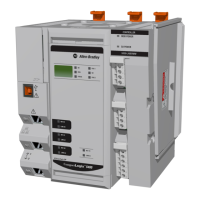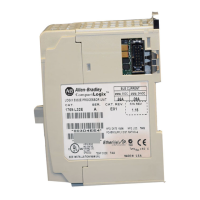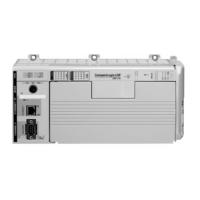Rockwell Automation Publication 5069-UM002A-EN-P - January 2019 63
Connect to the Controller Chapter 2
DNS Addressing
You can also use DNS addressing to specify a host name for a controller, a
domain name, and DNS servers. DNS addressing makes it possible to
configure similar network structures and IP address sequences under different
domains.
DNS addressing is necessary only if you refer to the controller by host name,
such as in path descriptions in MSG instructions.
To use DNS addressing, follow the following steps.
1. Assign a host name to the controller.
A network administrator can assign a host name. Valid host names must
be IEC-1131-3 compliant.
2. Configure the controller parameters.
3. Configure the IP address, subnet mask, gateway address, a host name for
the controller, domain name, and primary/secondary DNS server
addresses.
In the DNS server, the host name must match the IP address of the
controller.
4. In the Logix Designer application, add the controller to the I/O
configuration tree in the Logix Designer application project for
another controller.
IMPORTANT If a child module resides in the same domain as its parent module,
type the host name. If the domain of the child module differs from
the domain of its parent module, type the host name and the
domain name (hostname.domainname)
IMPORTANT You can also use DNS addressing in a module profile in the I/O controller tree
or in a message path. If the domain name of the destination module differs
from the domain name of the source module, use a fully qualified DNS name
(hostname.domainname).

